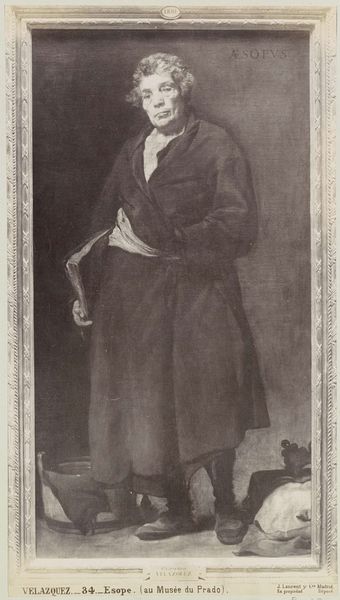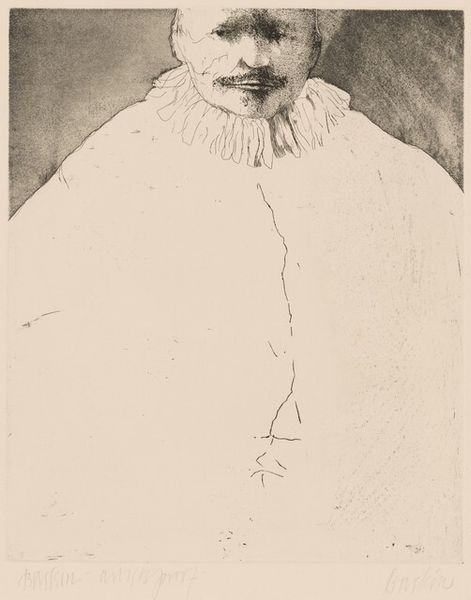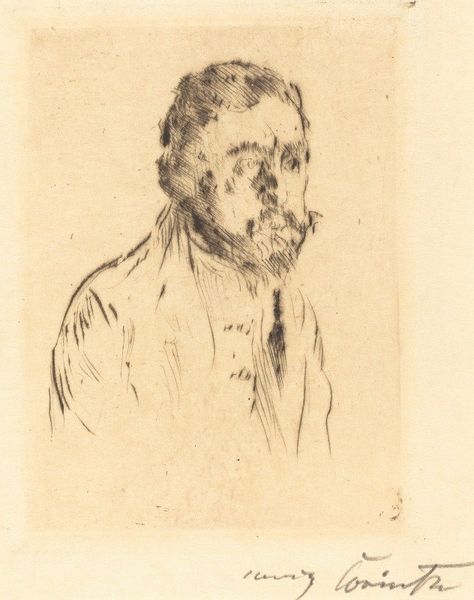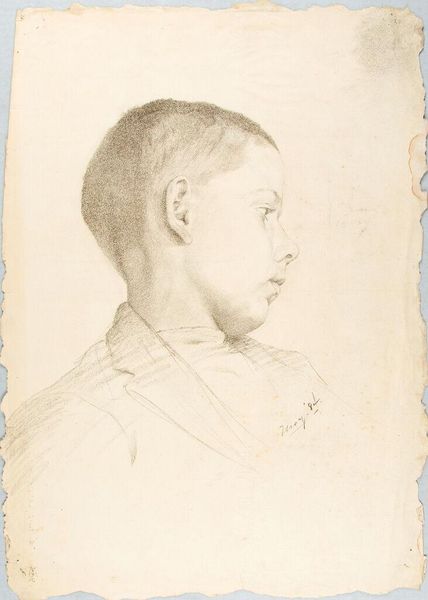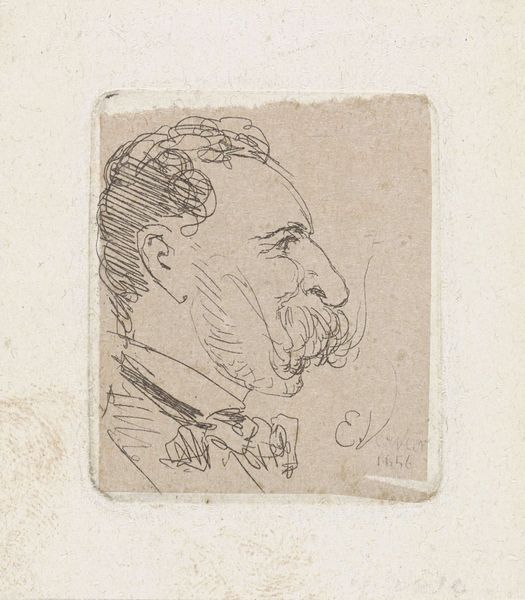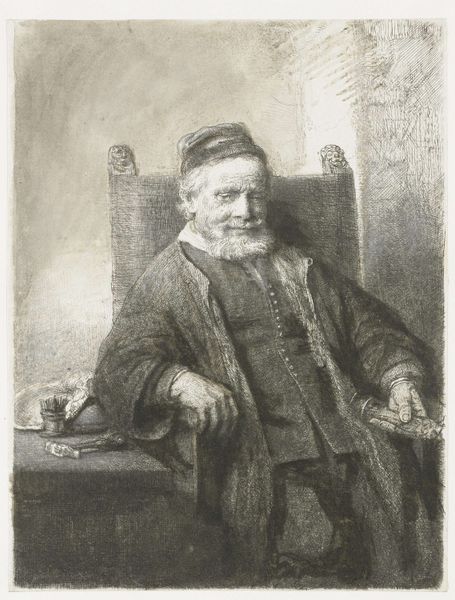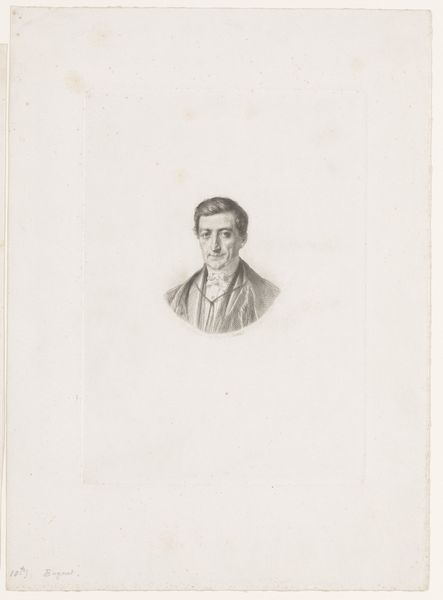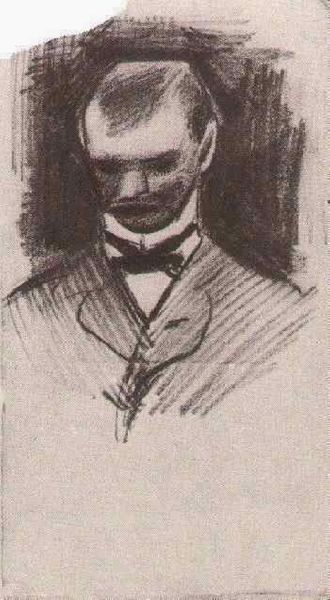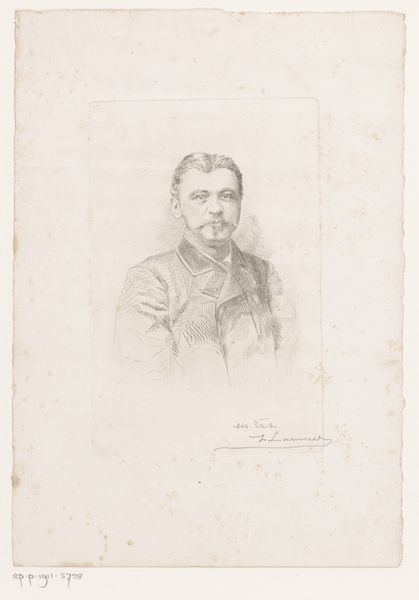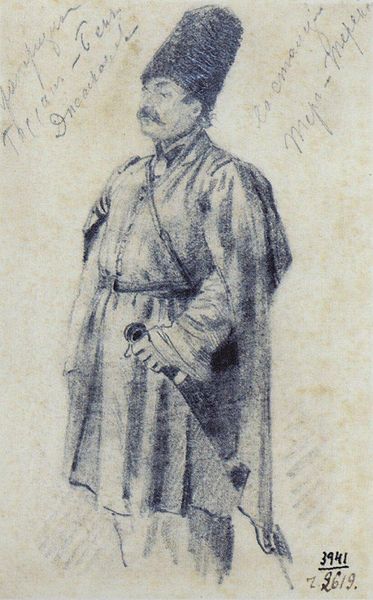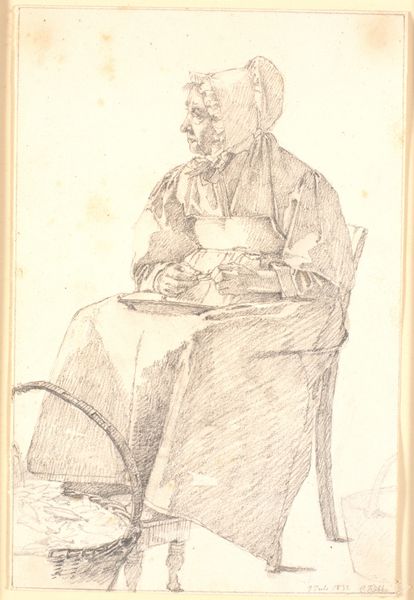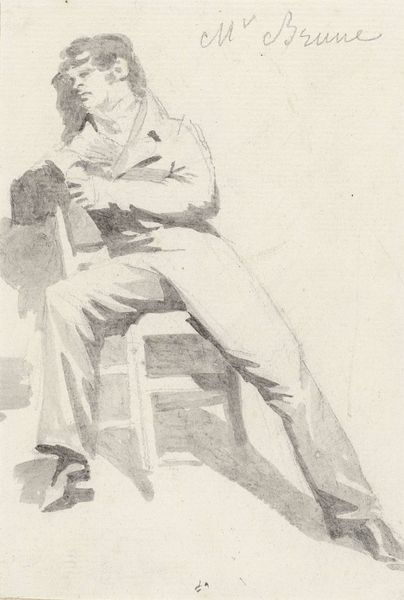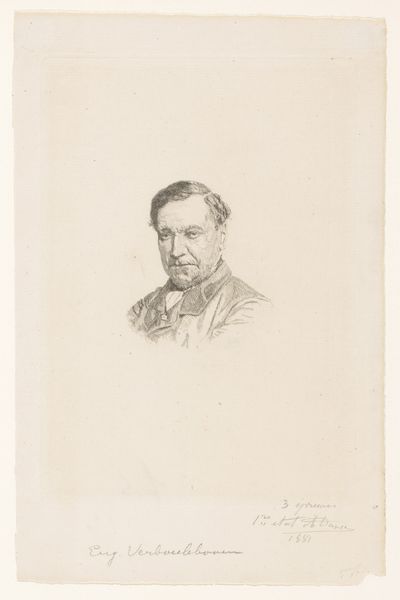
drawing, pencil
#
portrait
#
pencil drawn
#
drawing
#
16_19th-century
#
pencil drawing
#
pencil
#
portrait drawing
#
academic-art
#
realism
Copyright: Public Domain: Artvee
Editor: This drawing is a portrait of M. J. Paton, a financial editor, by Alexandre Cabanel, created in 1853 using pencil. The sketchiness gives it a really intimate, almost fleeting, feel. What strikes you when you look at this piece? Curator: The composition immediately asserts itself. The artist’s application of line, the strategic use of hatching and cross-hatching, generates depth and volume despite the limitations of the medium. Note how the artist builds up tone in the face and clothing, achieving a remarkable likeness without relying on colour. The gaze, directed off to the left, draws the viewer’s eye and contributes to a dynamic tension within the picture plane. Editor: It’s interesting how the detail is concentrated on his face, and fades away towards his hands and clothing. It almost feels unfinished. Curator: Precisely. The areas of less defined execution serve to further emphasise the focal point: the sitter’s expression, meticulously rendered, invites closer contemplation. The varying line weights are carefully calculated. Do you notice the use of shorter, more frenetic marks that communicate texture? Editor: I do now that you point it out. The quicker, sketchier strokes make the texture almost tangible. Curator: Exactly. The materiality of the pencil on paper is never disguised; the process of creation remains evident. The formal elements communicate an overall sense of immediacy. It is this directness and clarity that, in my view, elevate this study. Editor: I learned so much looking at how technique shapes the work. I really appreciate the guidance in identifying all those careful choices! Curator: And I hope the discussion shed light on the inherent structure and form and how those elements shape meaning in the drawing.
Comments
No comments
Be the first to comment and join the conversation on the ultimate creative platform.
